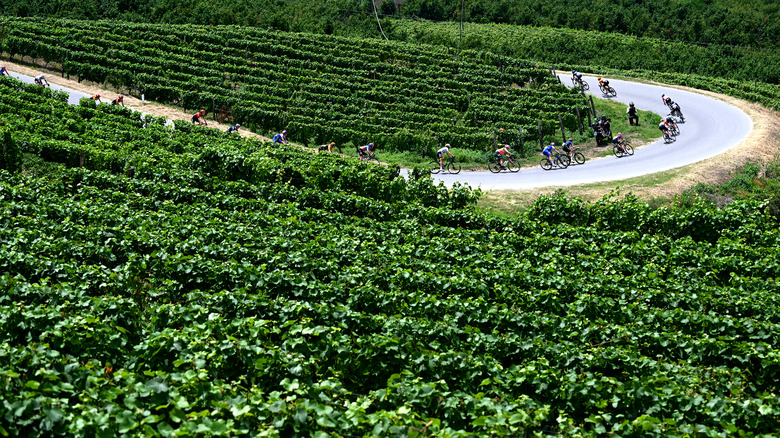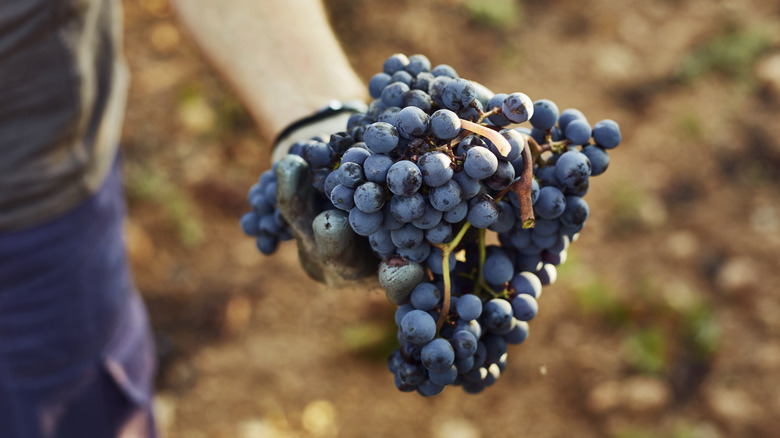What Is A Field Blend, And Why Should You Be Drinking Them?
Most of the wines sold commercially today are either single-grape varieties (Sauvignon Blanc, Albariño, etc.) or blends of a few different types of grape varietals. (For example, a red blend made from 85% Cabernet Sauvignon, 10% Petit Verdot, and 5% Cabernet Franc.) But this wasn't always the case. Historically, vignerons planted different varietals of grapes together and fermented them together to create wines known as field blends.
"Field blends are rare and have very interesting flavor profiles," Adam Forni, co-owner of Dancing Crow Vineyards, told Food Republic. The California winery makes an award-winning field blend called the Old Stake Field Blend, which uses at least 24 grape varieties. "That blend, with all its flavor and aroma variations, creates (in our opinion) something unique and special. And may be unlike anything you've tasted before," Forni continued.
But what exactly are these field blends, and how are they made?
All about field blends
Field blends are beneficial to winemakers because they act as a kind of safety net for the vineyard's wine production. If something happens to one of the grape varieties, it's not as big of an issue because the whole of the vineyard's grape yield can be used to make up for what's been lost. Winemaking is a notoriously finicky business, and this process ensures the creation of complex, interesting wines with a larger margin for error. By picking and co-fermenting grapes together, the entirety of the vineyard's output is on display.
Terroir, while always important in winemaking, really shines through in field blends because you're reaping the rewards of the nuances the region gives to each individual grape variety. It also allows for a unique appreciation for lesser-known or underappreciated grape varieties, which lend structure and support to other more recognizable grape varieties. There is also an added emphasis on harvesting dates since the grapes must be harvested all at once, which takes extra planning and attention to detail.
A taste of history
The practice of making field blends was brought to the U.S. from Europe by way of nineteenth-century waves of immigration. European vines were replanted in the States, largely in California, and since many of these vines escaped the European phylloxera blight, there are truly historic vines in Napa and Sonoma that have outlasted their French or German cousins abroad. Most California field blends come from red grapes, but older field blend traditions in Austria and the Alsace region of France are known for white field blends, like Vienna's Wiener Gemischter Satz. The practice has also been picked up in recent years by ever-innovative Australian winemakers.
But California's historic vines, though they have a lower yield than newer vines, offer an opportunity to go back to the region's roots. "It's fun to say you've had a wine from vines that were planted 120 years ago. It truly is a taste of history," Forni explained.



